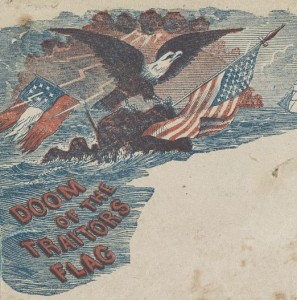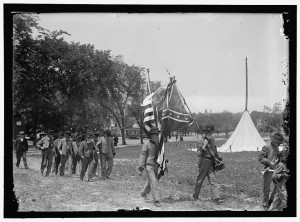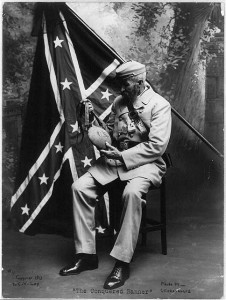Flags unite, flags divide
Given their nature and purpose, flags can be saluted or slandered, waved or waved away, raised up or torn down from flagpoles. That duality occurred during the Civil War, when battles in places like Gettysburg, Pa., brought brother into conflict with brother, each of whom saluted a different banner.

There, as on other battlefields, a Union soldier might proudly lift up his Stars and Stripes, while his Confederate sibling, under the Stars and Bars, eagerly sought to riddle it with musket balls.
In 1862 in New Orleans, a man was hanged for “tearing down the American flag,” reported a Boston newspaper. He was executed by the occupying Northern forces from a gallows positioned directly beneath the flagpole he had assaulted. The location was a firm warning to other Southerners that their former flag was once again their national flag.

Three years later, a Tennessee schoolgirl tore down a U.S. flag and then walked on it. Despite her age, Emma Latimer was court-martialed by post-war Union troops, fined and sentenced to imprisonment.
A general remitted the penalties but cautioned her “to remember that it will not do to trifle with the sacred emblem of our nationality. In spite of the opposition of all the school girls in the South, the ‘Banner of Glory and Beauty’ will still wave over the land of the free, and…will continue to float until time shall cease.”

As America marks the 150th anniversary of the War Between the States, divisions over flags continue to arise. In Virginia, according to a Richmond newspaper, “a Confederate heritage group…plans to fly a 10-by-15-foot Confederate flag along Interstate 95….The flag will fly on a 50-foot pole.”
The scheduled date for the unfurling, Sept. 28, was set by an organization called Virginia Flaggers. It announced that the banner would be flown “as a memorial to the memory and the honor of the Confederate soldiers who sacrificed, bled and died to defend Virginia from invasion.”
In reply, the executive director of the NAACP in Virginia called the plan “an embarrassment” that would make Richmond “look like a backwater, trailer-park, hick town.”
Recalling one of the causes of the Civil War, he added that “if [the Confederacy] had been successful, I’d still be in chains.”
